|
My research on Native American interactions with early English settlers of Massachusetts and New England led me to the writings of one Thomas Morton, who in 1638 wrote detailed accounts of the Pennacook and other bands of Indians. (Note - I tend to call the colonists “English” and the natives “Indians” because all the writings from the colonial period use these terms.)
It turns out that, in 1626, before the Puritans were establishing Boston, Thomas Morton and some friends established a colony called Merrymount (as in, a hill for merriment), a.k.a. Wallaston. The name lives on as a subway stop on the Red Line in Quincy, Mass., site of the small colony, but it otherwise seems to have been forgotten. From what I could gather, it was sort of the anti-Puritan colony, full of drunken revelry, hooking up with native females, and a lot of other activity that no doubt drove the puritans mad. Here are some of my quick notes. Some of this might be cut and pasted from copyrighted material so I may need to edit this. Morton disdained the Pilgrims at Plymouth, who he called ‘those Moles.’ He complained they ‘keep ‘much ado about the tithe of mint and cumin, troubling their brains more than reason would require about things that are indifferent.’ He called the first governor of Massachusetts, John Endicott, “that great swelling fellow, Captain Littleworth,” and called the short Myles Standish, military leader of the Plymouth colony, ‘Captain Shrimpe.’ On May 1, 1627, Merrymount decided to throw a party in the manner of Merrie Olde England. Morton hoped it would attract some Indian brides for his bachelor followers. Thus, he violated a cardinal concept of English settlement of New England: endogamy, or marriage solely within the group. In contrast to French Quebec and Acadia, where European-native marriages were tolerated (possibly because settlement was largely by men), they were a big no-no in New England (possibly because settlement was by supposed to be by families and entire villages that came over from England together). Morton was arrested on Sept 30, 1629 and was sent back to England by the Puritan authorities. The account of his transgressions said, "The inhabitants of Merrymount ... did devise amongst themselves to have ... Revels, and merriment after the old English custom ... & therefore brewed a barrell of excellent beer, & provided a case of bottles to be spent, with other good cheer, for all comers of that day. And upon Mayday they brought the Maypole to the place appointed, with drums, guns, pistols, and other fitting instruments, for that purpose; and there erected it with the help of Savages, that came thither of purpose to see the manner of our Revels. A goodly pine tree of 80 foot long, was reared up, with a pair of buckshorns nailed on, somewhat near unto the top of it; where it stood as a fair sea mark for directions, how to find out the way to mine Host of Ma-re Mount." Gov. William Bradford was horrified by the ‘beastly practices of ye mad Bacchanalians.’ After a second Maypole party the next year, Myles Standish led a party of armed men to Merrymount, seized Morton and put him in chains. Not a shot was fired. According to Morton, the Merrymount inhabitants didn’t want bloodshed. According to Bradford, they were too drunk to resist. Morton wrote a guidebook of sorts in 1638 while back in London, on the culture of the New England Indians. He supposedly used the money from the sale of the book to pursue a lawsuit against the Massachusetts Bay Colony. I don’t know what came of that lawsuit. In his book, he compares the native Americans to the Irish in their primitiveness. “The Natives of New England are accustomed to build themselves houses much like the wild Irish; they gather poles in the woods and put the great end of them in the ground, placing them in form of a circle or circumference, and, bending the tops of them in form of an arch, they bind them together with the bark of walnut trees, which is wondrous tough, so that they make the same round on the top for the smoke of their fire to ascend and pass through; these they cover with mats.” He also wrote, “when they have their apparel on they look like Irish”. Ireland was of course England’s first colony.
1 Comment
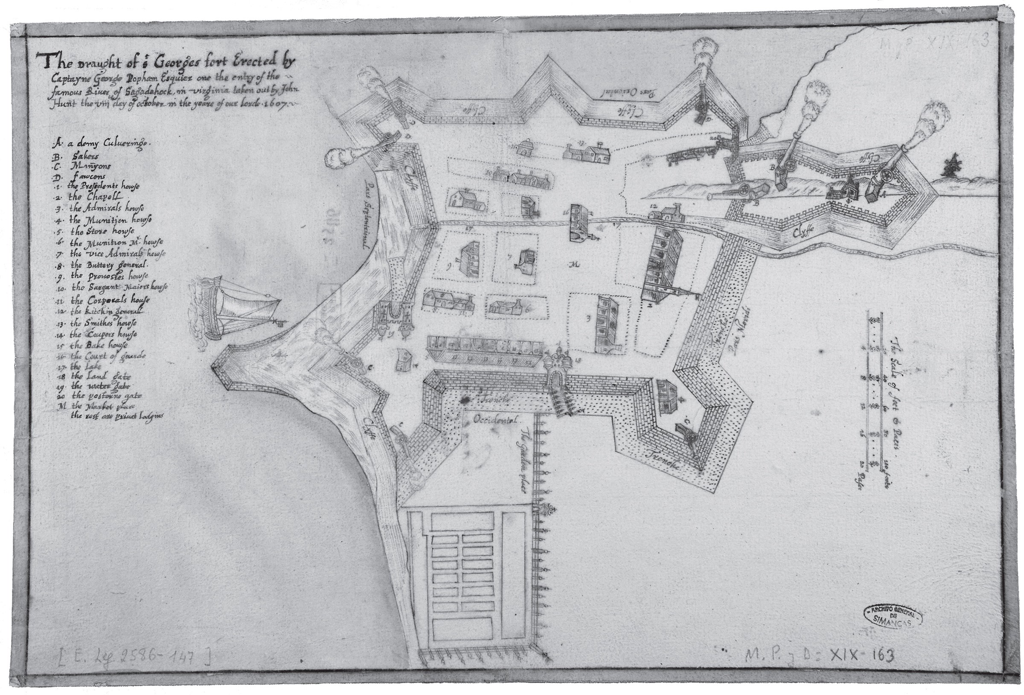 The "Hunt Map" showing Fort St. George, the fortification at the short-lived Popham Colony Everyone knows the story of the Plymouth Colony of 1620, revisited every Thanksgiving, and many people have at least some notion of the Puritan settlement of Massachusetts Bay Colony. However the English colonization of New England was sometimes a messy affair full of false starts and paper claims, especially to the north of Massachusetts Bay. The story of New Hampshire (which managed to break away from Massachusetts for good in 1741) and Maine (which took until 1820) can be covered in other blog entries. Here are some notes on the short-lived Popham Colony of 1607. Until this year I had never heard of it. The Popham Colony—also known as the Sagadahoc Colony—was a short-lived English colonial settlement in North America that was founded in 1607 and located in the present-day town of Phippsburg, Maine, near the mouth of the Kennebec River by the proprietary Virginia Company of Plymouth. It was abandoned after a year despite low mortality. The first ship built by the English in the New World was completed during the year of the Popham Colony and was sailed back across the Atlantic Ocean to England. The pinnace, named Virginia of Sagadahoc, was apparently quite seaworthy, and crossed the Atlantic again successfully in 1609 as part of Sir Christopher Newport's nine vessel Third Supply mission to Jamestown. Postage Stamp from 1957 Commemorating the "Virginia of Sagadahock" 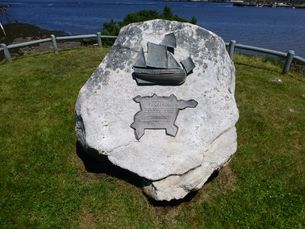 A contemporary monument to the ship Virginia of Sanghedoc at the Popham site On May 31st, 1607, the ships Gift of God and Mary and John departed for the intended Popham Colony carrying some 120 colonists - a slightly larger group than had travelled from London to Jamestown. Unlike that rival expedition, the Plymouth group took just nine council members and half-a-dozen other notable gentlemen, with the majority being mainly soldiers, craftsmen, farmers and traders, their objective to reach the coast of 'North Virginia' at a latitude of about 43 degrees north. The Gift of God arrived at the mouth of the Sagadahoc River (now the Kennebec in Maine) on August 13th, and Mary and John followed three days later. • The exact site of Popham Colony was unknown in modern times until it was discovered in 1994 and excavated by archaeologists for next ten years. It was within a stone's throw of present day Fort Popham, built during the U.S. Civil War to protect the mouth of the Kennebeck. • Discovery was aided by the picture-plan of Fort St. George that was drawn on site by one of the colonists. It is unique since it is the only detailed drawing that exists for an initial English settlement anywhere in the Americas. Fortified with a ditch and rampart, the enclosure contained a storehouse, chapel, guardhouse, and other public buildings, as well as residences for the colonists. The fort was defended by nine guns that range in size from demi-culverin to falcon. The boat built by the colonists, the pinnace Virginia, floats offshore although it could not have been completed by the date of the map. • The Hunt map had been lost to history until it surfaced in a royal archive in Simancas, Spain in 1888. It ended up there via a 1608 dispatch to the Spanish king from Don Pedro de Zuniga the Spanish ambassador in London. The dispatch also contained a sketch of the English colony at Jamestown also founded in 1607. How he got his hands on hunt’s map is unclear. • The 1607 founding of the Popham Colony (also called Fort George) was the second attempt by the Plymouth England branch of the Virginia Company which had been given a charter to coastal North America above the 38th parallel, roughly modern northern Virginia. The more famous Virginia Company of London was given a charter south of the 41st parallel (roughly modern NYC). Note the geographic overlap. • The Richard, a ship sent by the Plymouth Company in August 1606 under the command of Captain Henry Challons, never reached its intended destination in what is now the state of Maine, being intercepted and captured by Spanish forces near Florida in November 1606. • The Popham Colony was abandoned because leader George Popham died (his rich uncle had financed the expedition), and second-in-command Robert Gilbert learned he had inherited a title and landholdings back in England. Below: Map Showing the lands granted to the two Virginia Companies, the more famous Virginia Company of London (founders of Jamestown) and the Virginia Company of Plymouth (founders of the unsuccessful Popham Colony - later, they took jurisdiction over the Separatist colony that incidentally landed in their claim, which was named Plymouth). Note the overlapping area between the two companies. SOURCE: www.mainestory.info/maine-stories/popham-colony.html (Pat Higgins)
|
|
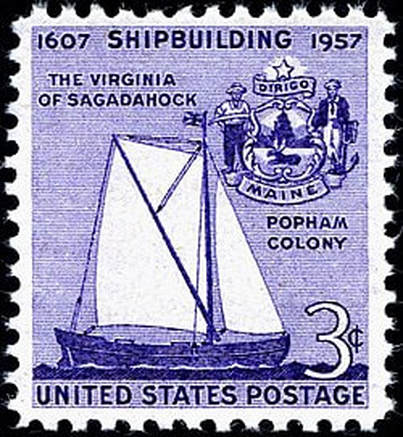
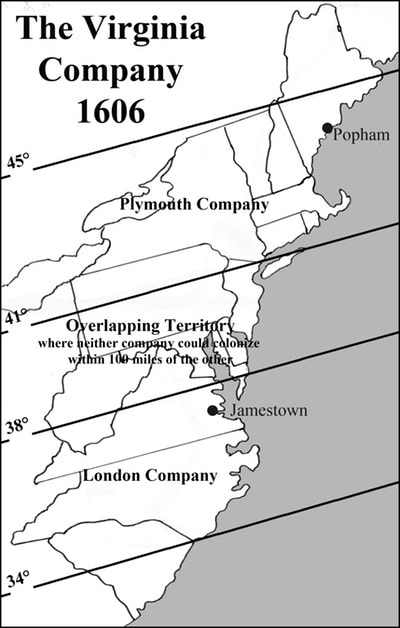
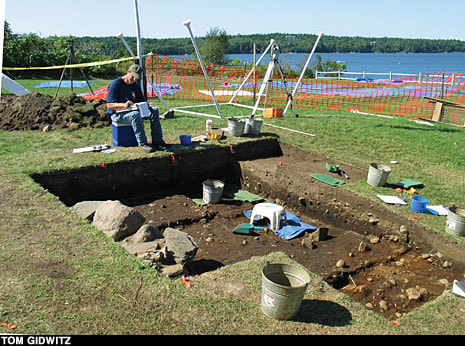
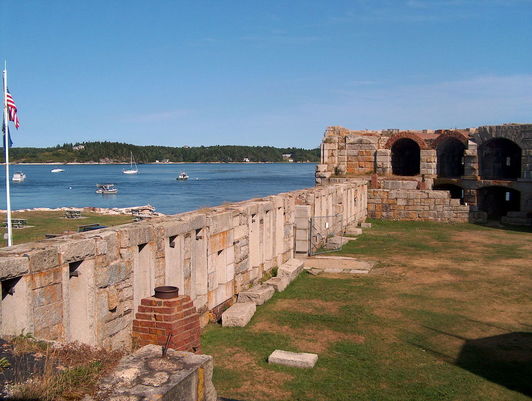
 RSS Feed
RSS Feed